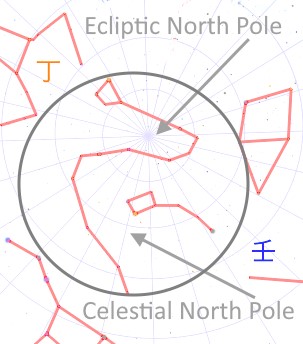陰陽 Yin Yang - Two Polarities
What are Yin and Yáng (陰陽)?
Straight to the point, Yang and Yin mean day and night or sun and moon, nothing more, nothing less. However, Yang and Yin are reused with many attributes, such as Yang being considered male, strong, or white, and Ying being female, weak, or black, as an expression of duality or polarity.| Almost always, the Yin Yang is associated with a circle divided by a snake “S” image, which is known as (太極 TàiJí: The supreme pole). The snake in the middle of the circle, which divides the circle into two parts, represents the big snake known as the Dragon (Draco) constellation. (太極 TàiJí) the supreme pole at (Draco), the heart of the dragon was indeed used as the pole star in the (伏羲 FúXī) Early Heaven system before the change of the ecliptic axis and shift to the Dipper/Polaris asterism (後天八卦 Later Heaven system). Often overlooked is the fact that the heart of the dragon is still the ecliptic and not the celestial supreme north pole. |
 |
Gazing at the night sky while the earth is rotating around the pole star, one would realize that one part of the earth would be night and the other part day; therefore, the part of the TaiJi circle that represents night (Yin) is painted black while the other part is kept white as a reference to day (Yang). This system of day and night around the pole star is called (兩儀 Liǎng yí) the two modes and means Yang/Day and Yin/Night.
From here, the development of the two (Yin and Yang/ Night and Day), the four (the correlation of the four moon phases with the four seasons), the division of the sky into four images (四象 Sì Xiàng) and the eight phases of the moon, which divide the sky into eight sectors or eight directions (八卦; BaGua) belong to different chapters.